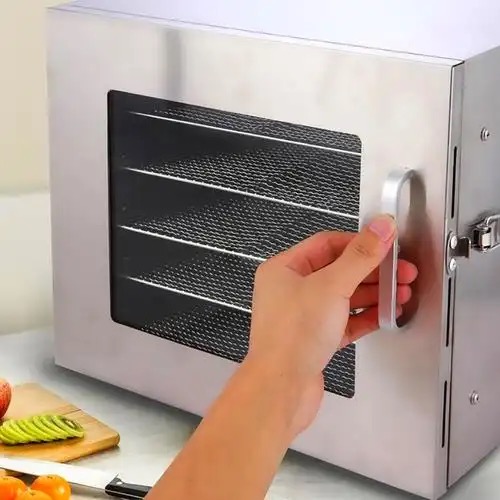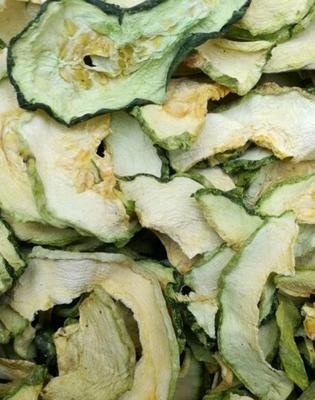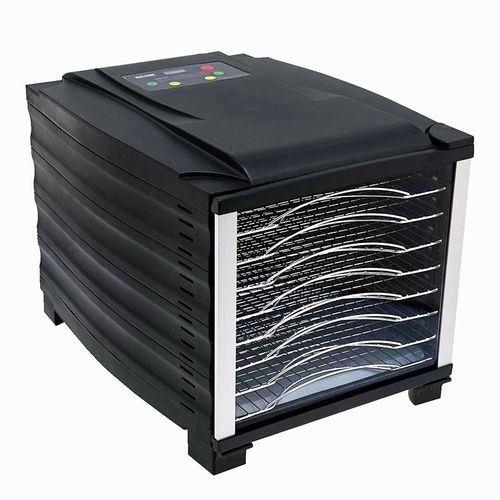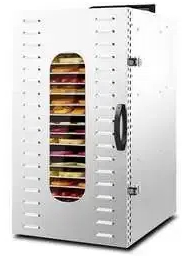
Content Menu
● Understanding Heat Pump Dryers
>> Components of Heat Pump Dryers
● Common Noises from Heat Pump Dryers
● How to Prevent Loud Noises
● The Role of Food Dehydrators
>> What is a Food Dehydrator?
>> How Does a Food Dehydrator Work?
>> Benefits of Using a Food Dehydrator
● Noise Issues in Food Dehydrators
● Tips for Reducing Noise in Food Dehydrators
● Conclusion
● FAQ
>> 1. What causes my heat pump dryer to make a thumping noise?
>> 2. How can I reduce squeaking noises from my dryer?
>> 3. Is it normal for my heat pump dryer to make some noise?
>> 4. Can I use my oven as a dehydrator?
>> 5. How long does it take to dehydrate food?
Heat pump dryers are an efficient and eco-friendly way to dry clothes, but they can sometimes produce loud noises that may be concerning. Understanding the causes of these noises and how to prevent them can enhance your experience with this appliance. In this article, we will explore the functionality of heat pump dryers, common noise issues, and effective solutions. Additionally, we will discuss food dehydrators, their operation, and their benefits, which align with our focus on drying technologies.

Understanding Heat Pump Dryers
Heat pump dryers work by using a heat pump system to recycle hot air. They are designed to be more energy-efficient than traditional dryers by extracting moisture from clothes and reusing the heated air. This process not only saves energy but also minimizes wear and tear on fabrics.
Components of Heat Pump Dryers
- Heat Exchanger: This component cools the air to remove moisture and then reheats it for drying.
- Compressor: It compresses the refrigerant, which helps in transferring heat within the system.
- Fan: The fan circulates air throughout the dryer, ensuring even drying.
- Drum: The drum holds the clothes and rotates them during the drying cycle.
Common Noises from Heat Pump Dryers
While heat pump dryers are generally quieter than traditional models, they can still produce various noises. Here are some common sounds you might encounter:
- Thumping or Banging Noise: This can occur if there are heavy items in the dryer that shift during operation or if the dryer is not level.
- Squeaking or Screeching: Often caused by worn-out drum bearings or a malfunctioning idler pulley.
- Rattling Sounds: Loose screws or foreign objects in the drum can cause rattling noises.
- Grinding Noise: This usually indicates that the drum bearing is worn out and needs replacement.
How to Prevent Loud Noises
To maintain a quiet operation of your heat pump dryer, consider the following tips:
1. Level Your Dryer: Ensure that your dryer is on a flat surface. Adjust the feet of the dryer if necessary to prevent thumping sounds during operation.
2. Check for Foreign Objects: Regularly inspect the drum for any items that could cause rattling or banging noises. Empty pockets before loading clothes into the dryer.
3. Maintain Proper Load Size: Avoid overloading your dryer as this can lead to uneven weight distribution and excessive noise.
4. Regular Maintenance: Periodically check and clean the lint filter and vents to ensure proper airflow, which can help reduce noise caused by airflow restrictions.
5. Inspect Components: If you notice persistent noise, inspect components like drum bearings and idler pulleys for wear. Replace any damaged parts promptly.
6. Professional Servicing: If you're unable to identify or fix the source of the noise, consider contacting a professional technician for a thorough inspection.
The Role of Food Dehydrators
In addition to discussing heat pump dryers, it's essential to understand food dehydrators—another drying technology that serves a different purpose but operates on similar principles of moisture removal.
What is a Food Dehydrator?
A food dehydrator is an appliance designed to remove moisture from food items to preserve them. By lowering moisture content, dehydrators inhibit bacterial growth and spoilage, allowing food to be stored for extended periods without refrigeration.
How Does a Food Dehydrator Work?
Food dehydrators operate using a combination of heat and airflow:
- Heating Element: The dehydrator has a built-in heating element that raises the temperature inside the unit.
- Fan Circulation: A fan circulates warm air evenly around the food placed on trays within the dehydrator.
- Airflow Management: Proper airflow is crucial; it helps remove moisture-laden air from around the food while bringing in dry air from outside.

Benefits of Using a Food Dehydrator
Using a food dehydrator offers several advantages:
- Preservation of Nutrients: Dehydration retains most vitamins and minerals compared to other preservation methods like canning or freezing.
- Long Shelf Life: Dehydrated foods can last significantly longer than fresh foods, making them ideal for long-term storage.
- Cost-Effective: Buying seasonal produce in bulk and dehydrating it can save money compared to purchasing out-of-season fruits and vegetables.
- Healthy Snacking Options: Homemade dehydrated snacks are free from preservatives and added sugars found in many store-bought options.
- Versatility in Food Preparation: Dehydrators can be used for various foods, including fruits, vegetables, herbs, jerky, and even pet treats.
Noise Issues in Food Dehydrators
Just like heat pump dryers, food dehydrators can also produce noise during operation. Common noises include:
- Fan Noise: The fan is essential for circulating air but can be noisy if it's malfunctioning or obstructed by debris.
- Heating Element Noise: Some dehydrators may produce a humming sound when heating elements are engaged; this is usually normal but should be monitored if it becomes excessively loud.
Tips for Reducing Noise in Food Dehydrators
To minimize noise from food dehydrators:
1. Choose Quality Models: Invest in high-quality dehydrators known for quieter operation. Read reviews focusing on noise levels before purchasing.
2. Placement Matters: Place your dehydrator on a stable surface away from walls or other appliances that could amplify sound vibrations.
3. Regular Cleaning: Keep fans and heating elements clean from dust and debris to ensure they operate smoothly without unnecessary noise.
4. Monitor Usage Time: If possible, run your dehydrator during hours when noise will be less disruptive (e.g., during the day when household activity is higher).
5. Use Sound Dampening Materials: Consider placing rubber mats under your dehydrator to absorb vibrations that contribute to noise levels.
Conclusion
Understanding how to prevent loud noises from heat pump dryers enhances user experience while ensuring optimal performance. Regular maintenance and inspections are key components in addressing noise issues effectively. Similarly, food dehydrators provide an excellent method for preserving food through moisture removal while offering numerous benefits such as nutrient retention and cost savings. Both technologies play vital roles in modern household management, whether it's drying clothes efficiently or preserving food for future enjoyment.

FAQ
1. What causes my heat pump dryer to make a thumping noise?
Thumping noises often result from an unbalanced load or heavy items shifting during operation. Ensure your dryer is level and avoid overloading it with heavy garments.
2. How can I reduce squeaking noises from my dryer?
Squeaking sounds may indicate worn drum bearings or an idler pulley issue. Regularly inspect these components and replace them if necessary to eliminate squeaks.
3. Is it normal for my heat pump dryer to make some noise?
Yes, some noise is normal as dryers operate; however, loud or unusual sounds may signal a problem that should be investigated further.
4. Can I use my oven as a dehydrator?
While some ovens have a dehydration setting, they typically do not maintain low temperatures as effectively as dedicated food dehydrators do. For best results with dehydration, using a proper dehydrator is recommended.
5. How long does it take to dehydrate food?
The time required for dehydration varies based on food type and thickness but generally ranges from several hours to over a day depending on moisture content and desired dryness level.












